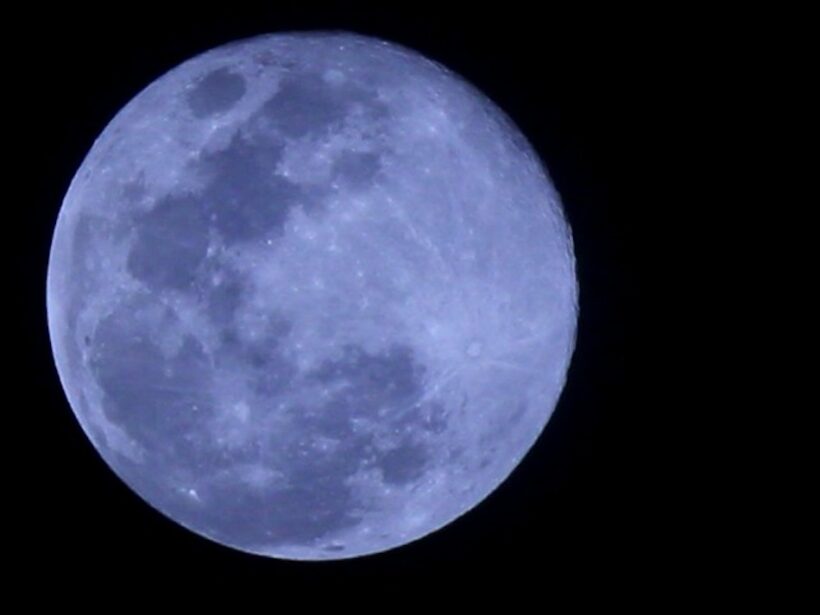The last time it happened was in 2018 and it won’t happen again until 2037.
This month of August [2023] reserves us an extremely rare astronomical spectacle, since coupled with the occurrence of the unusual phenomenon of the ‘blue moon’, there will be two supermoons.
Will we see the Moon blue during the ‘blue moon’?
NASA explains that, since the 1940s, the term ‘blue moon’ has been used for the second full moon in a calendar month. This rare event typically occurs only every 2 1/2 years, “so when you hear people say, ‘Once in a blue moon…’, you know they’re talking about something weird,” the agency notes. NASA also clarifies that this does not mean that the Moon will appear blue.
On the night of August 1 [2023], our natural satellite was in its full moon phase, but it appeared slightly brighter and larger than normal: a supermoon. This was because it was near its perigee (closest point in its orbit around Earth) at only 357,793 km [from the Earth. Translator’s note: the average distance Earth-to-Moon is 384 000 km; at its perigee, the moon is 363 300 km from the Earth].
Then, on the night of August 30, it will be in its full moon phase again and at a distance of 357,934 km (very close to its perigee), so the supermoon phenomenon will be repeated. Because of all of the above, the supermoon on August 31 will be a ‘blue moon’.
An extremely rare sight
The last time two full supermoons graced the sky in the same month occurred in January 2018. According to the Italian astronomer Gianluca Masi, quoted by AP, this event in which two supermoons coincide with a “blue moon” will not happen again until the year 2037.
Masi provided a live webcast of the supermoon on the night of August 1, as it rose over the Colosseum in Rome. “My plans are to capture the beauty of this […] I hope to bring the excitement of the show to our viewers,” said Masi. “The supermoon offers us a great opportunity to look up and discover the sky,” he added.
The mid-August supermoon is traditionally called “sturgeon” [moon] after the fish most caught in the North American Great Lakes and Lake Champlain during this part of the boreal summer.










